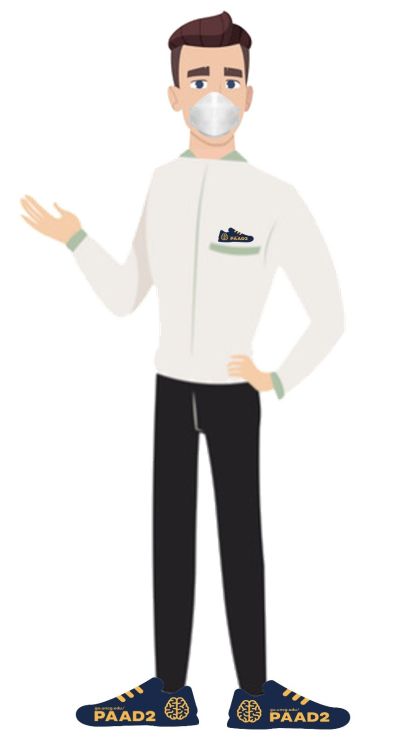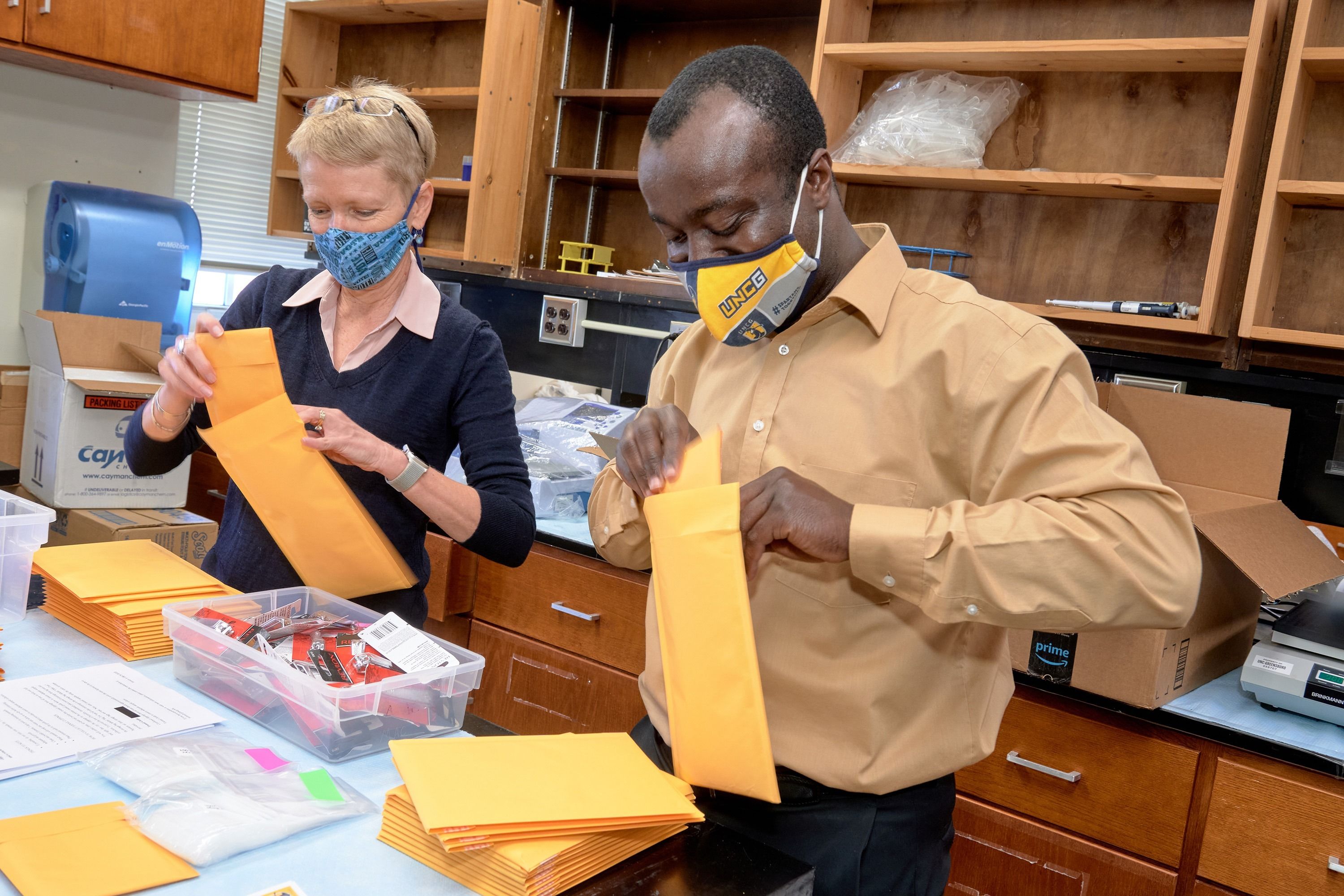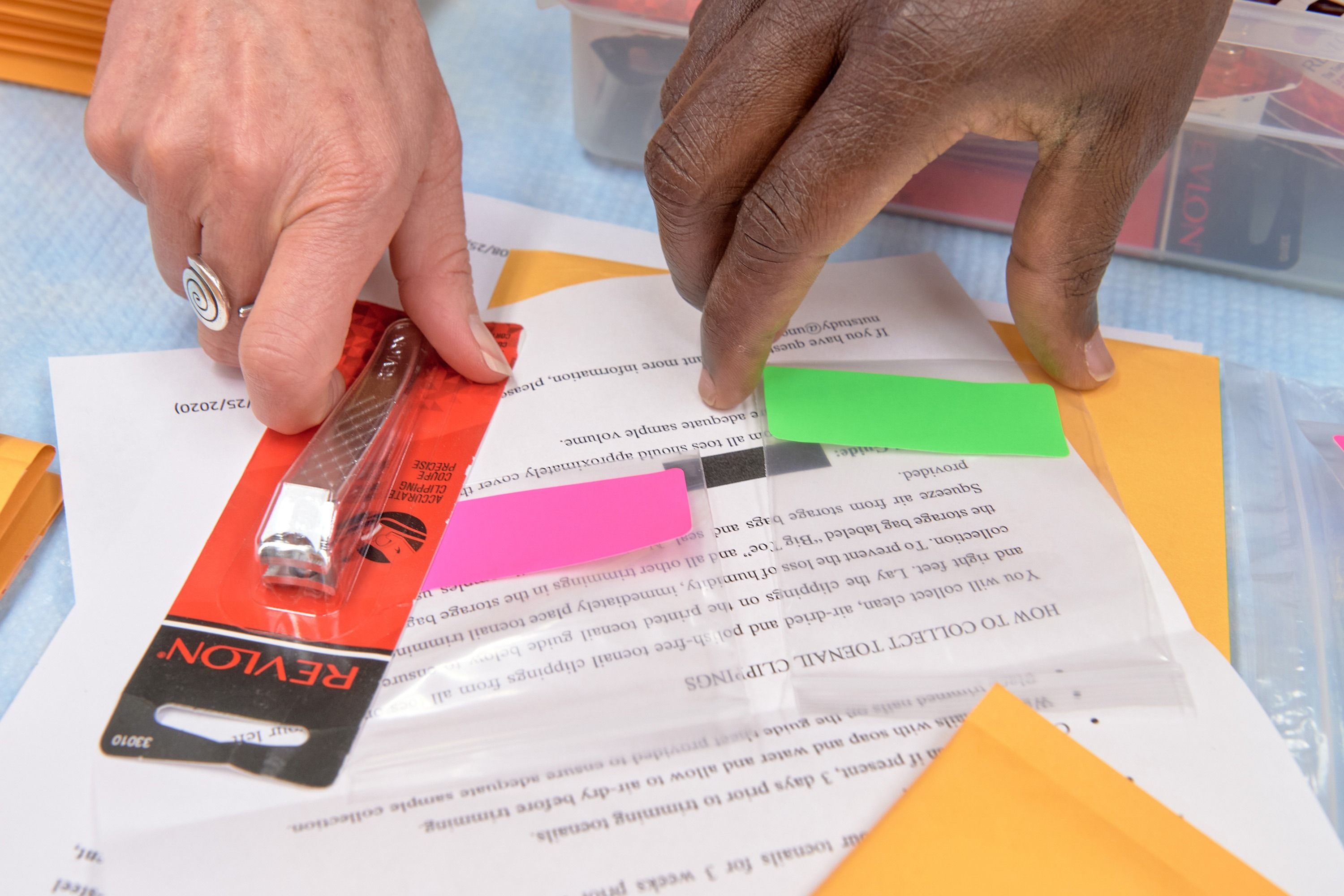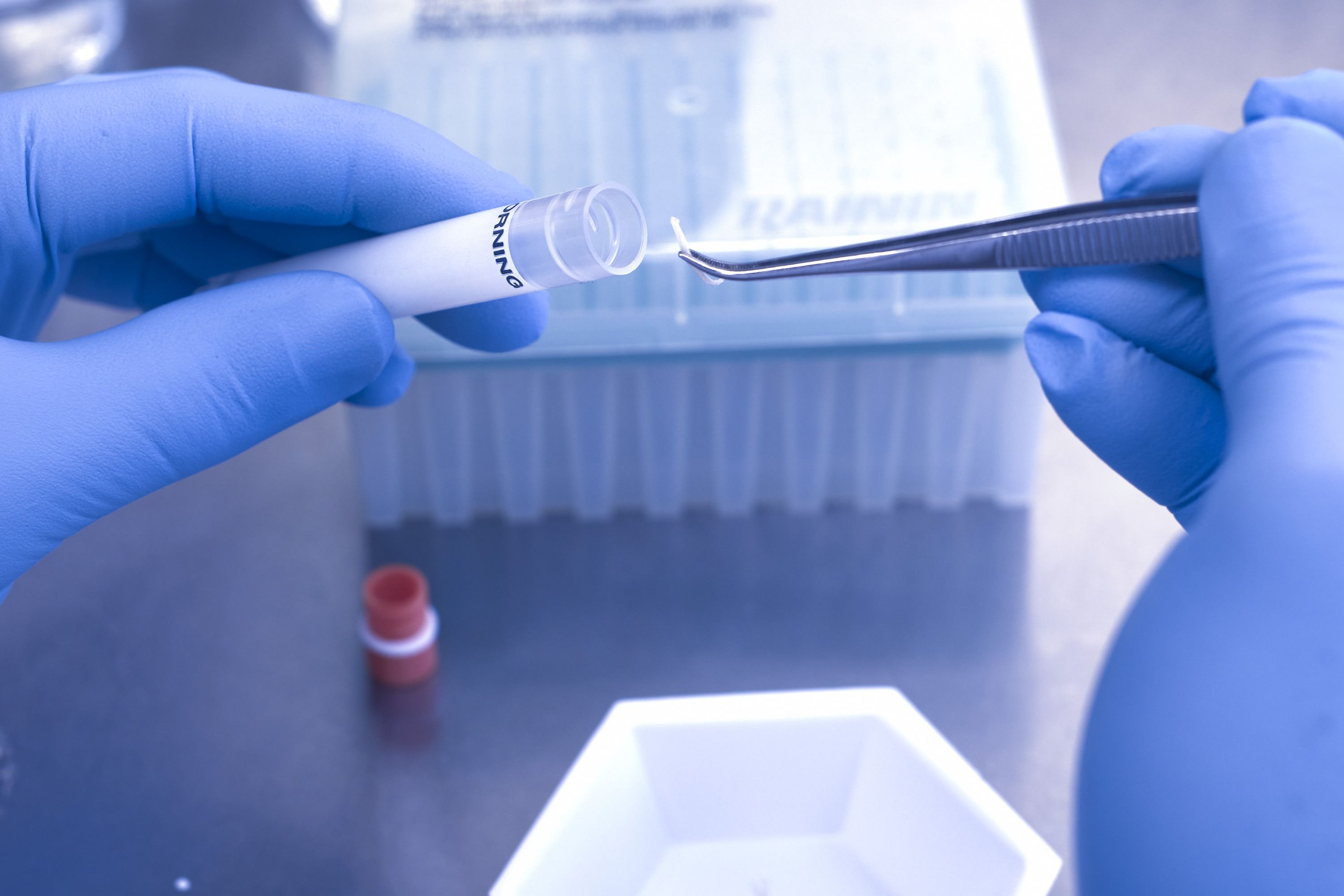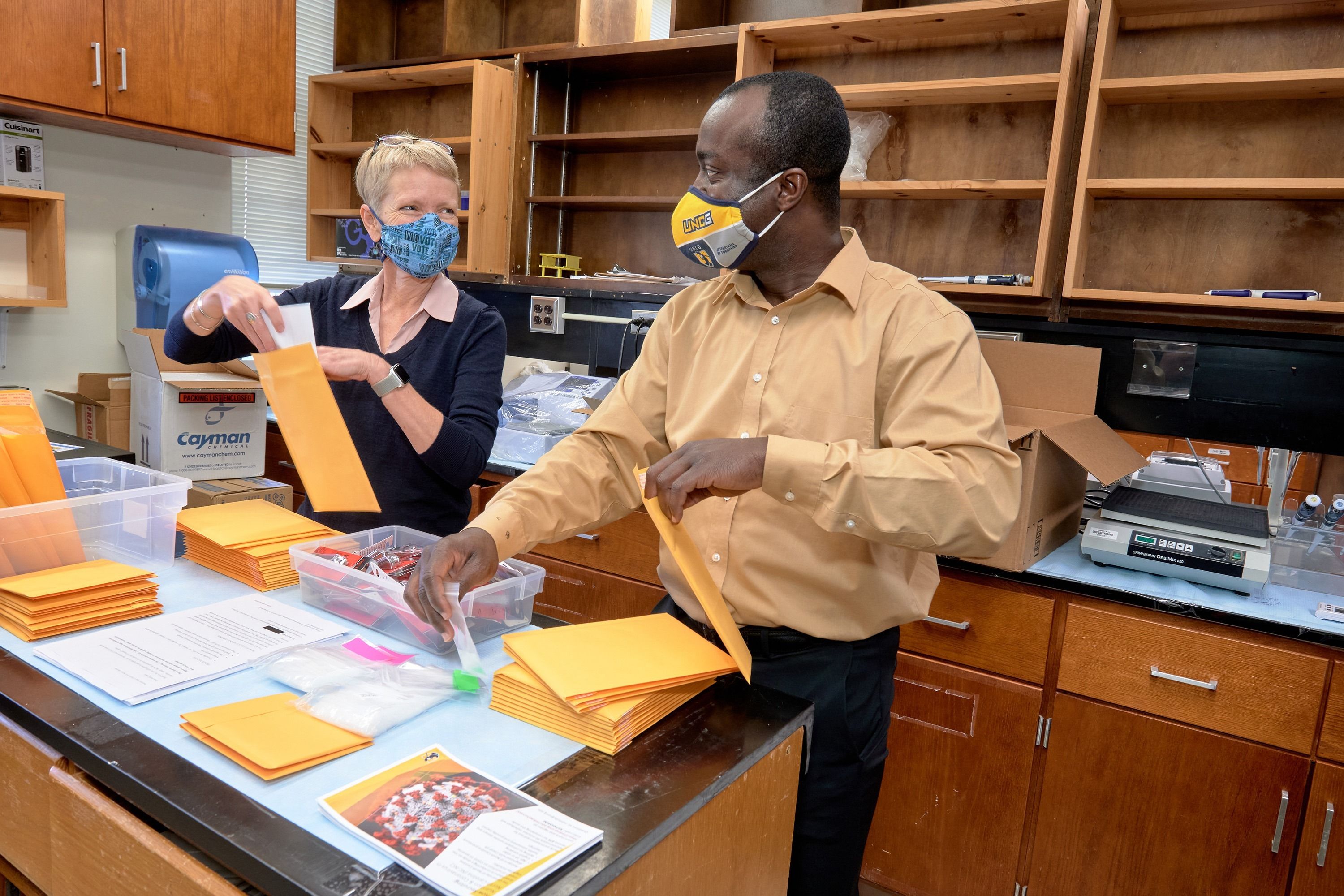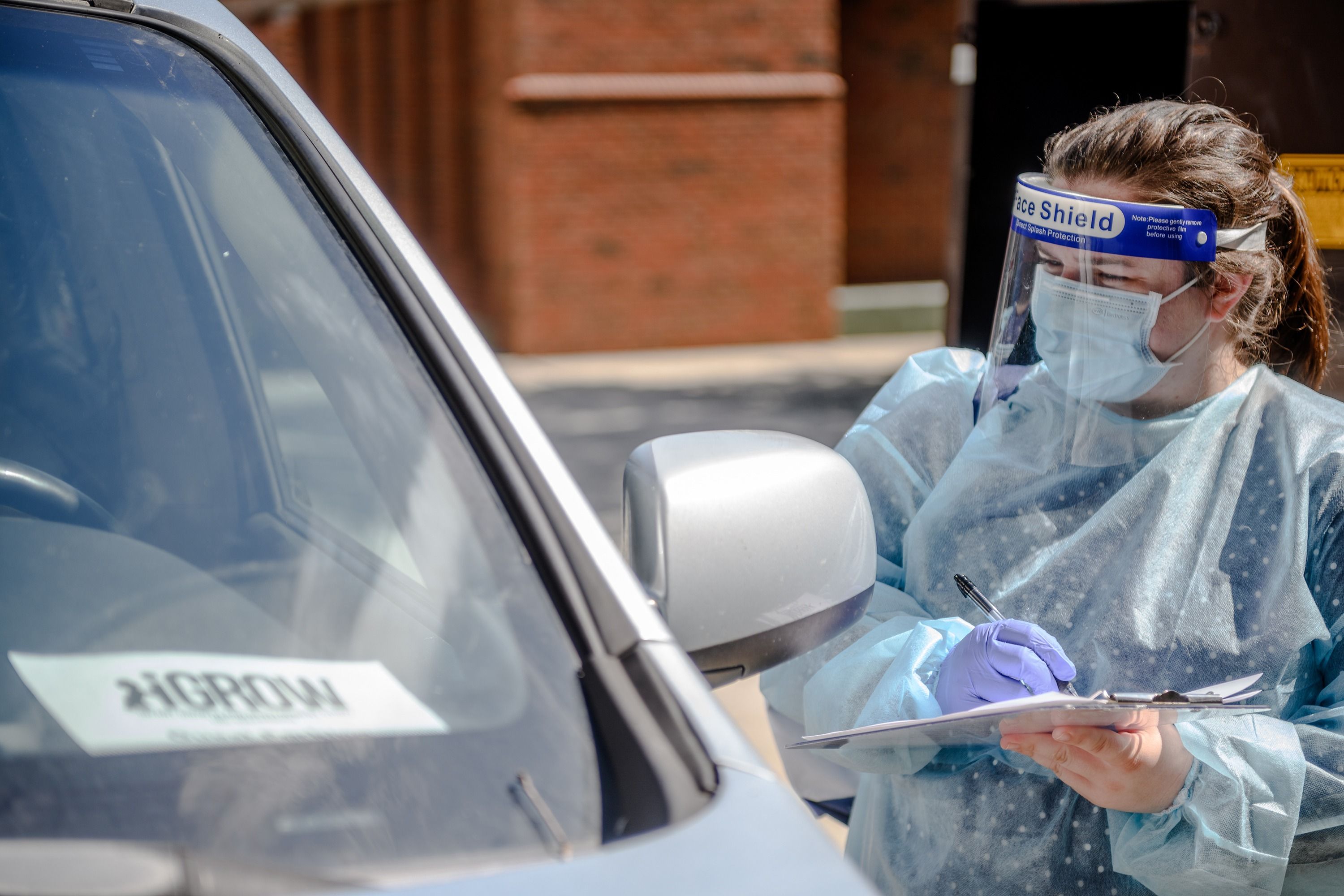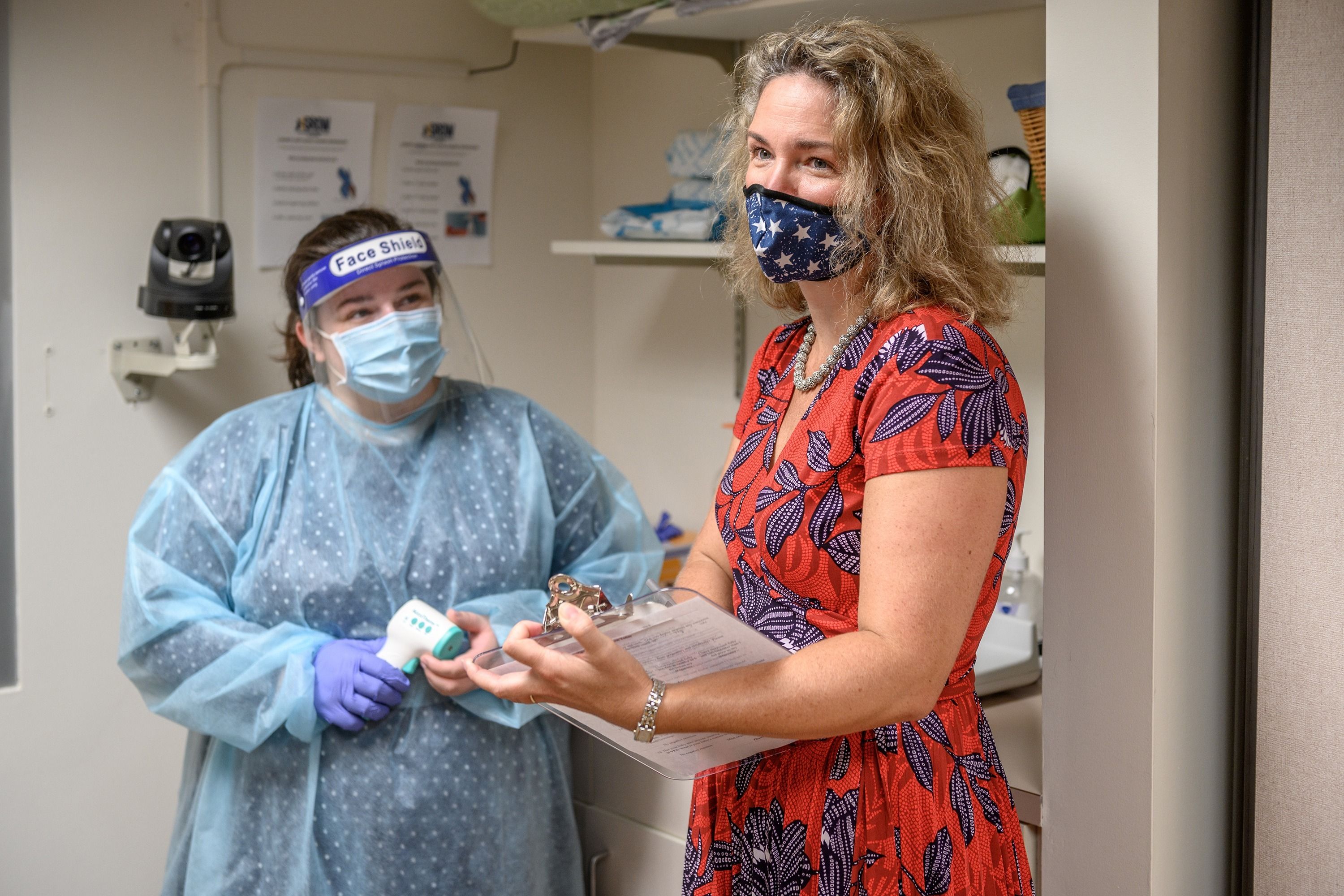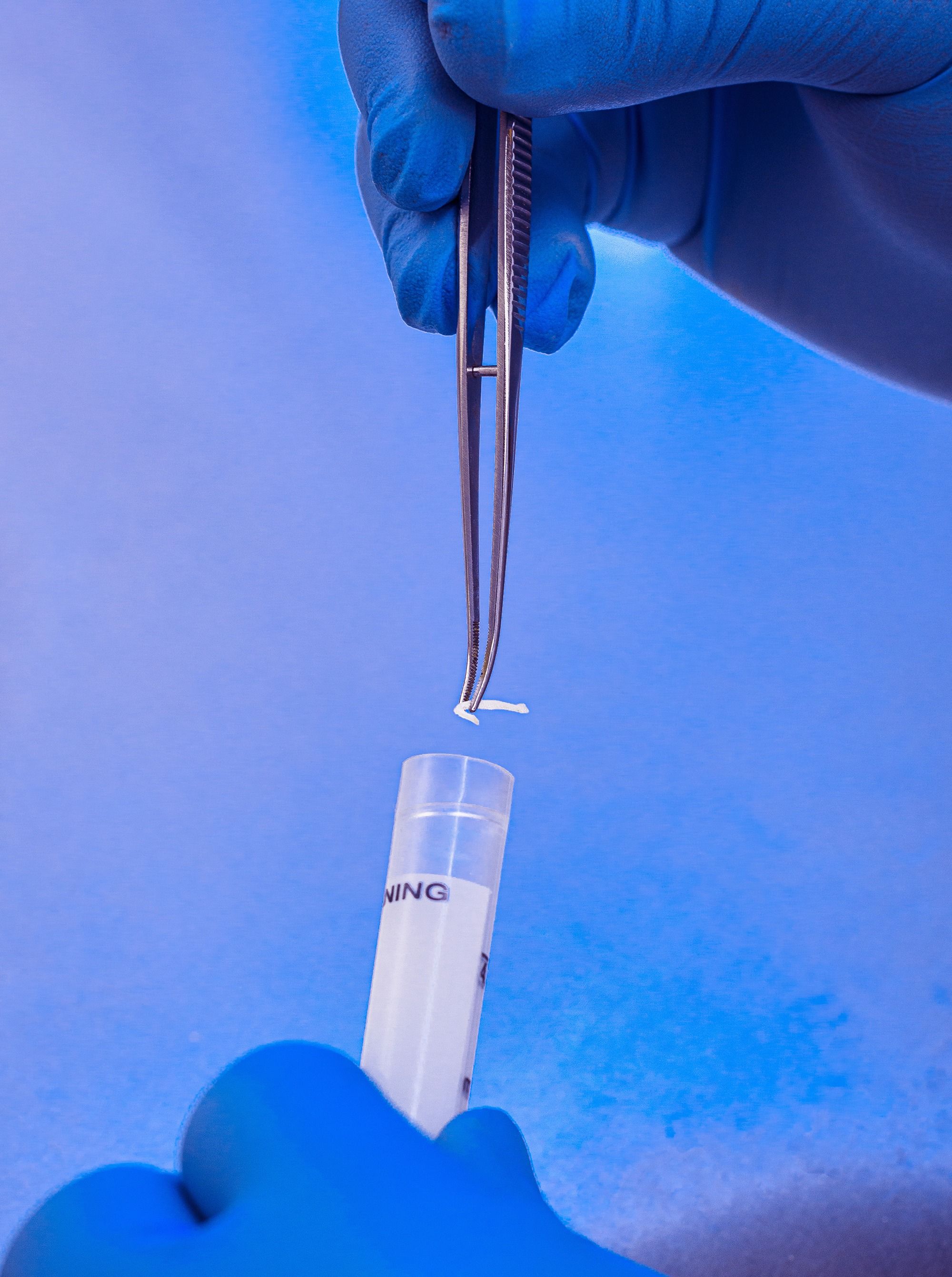
Fall 2020 | Feature
PIVOT POINT
We’re in the biggest public health emergency most living people have faced. Since March, campus researchers have had to pivot – to serve our most vulnerable, to seek answers to scientific questions generated by the pandemic, and to design new ways to carry out their research in a new world.

Fall 2020 | Feature
PIVOT POINT
We’re in the biggest public health emergency most living people have faced. Since March, campus researchers have had to pivot – to serve our most vulnerable, to seek answers to scientific questions generated by the pandemic, and to design new ways to carry out their research in a new world.
Rapid Response
Dr. Diya Abdo calls COVID-19 “anything but the great equalizer.” As the pandemic unfolded in the United States, many people bemoaned quarantine and self-isolation, but as the director of the UNCG Center for New North Carolinians points out, those are luxuries that many others can’t afford.
Immigrants, refugees, those in substandard housing, and low-paid and uninsured workers were among the groups most impacted by necessary closures. They were also more vulnerable to the illness due to employment and living conditions, and lack of health care and health care supplies.
As infrastructures stalled or failed, it became clear that communities served by UNCG centers were in the middle of Guilford County’s COVID-19 “hot spots.” Directors and their staff had to move quickly, in ways outside of their usual “accompaniment model” of service.
In collaboration with Dr. Stephen Sills, director of the UNCG Center for Housing and Community Studies, Abdo secured several grants. But they weren’t the typical grants, which might go toward case management and research. Instead, they were for helping clients meet their most basic needs: housing, food, and health services.
With support from the United Way’s Virus Relief Fund, Guilford County, and the North Carolina Healthcare Association, their two centers – known as the CNNC and CHCS – have been able to offer food assistance, rent support, cleaning supplies, masks, hand sanitizer, and school supplies to more than 100 families. They’ve also provided educational materials, employment services, public health services, and interpretation services.
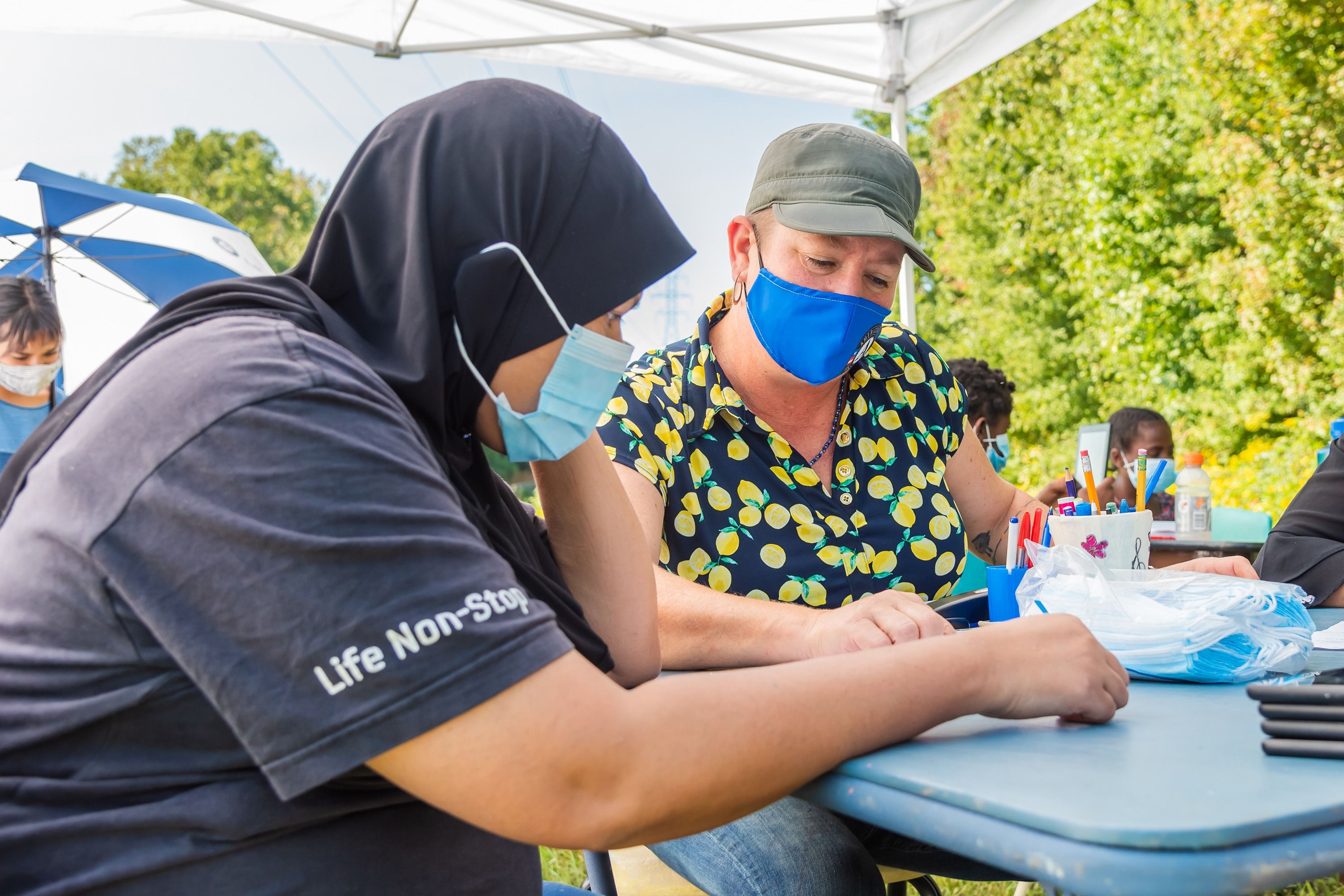
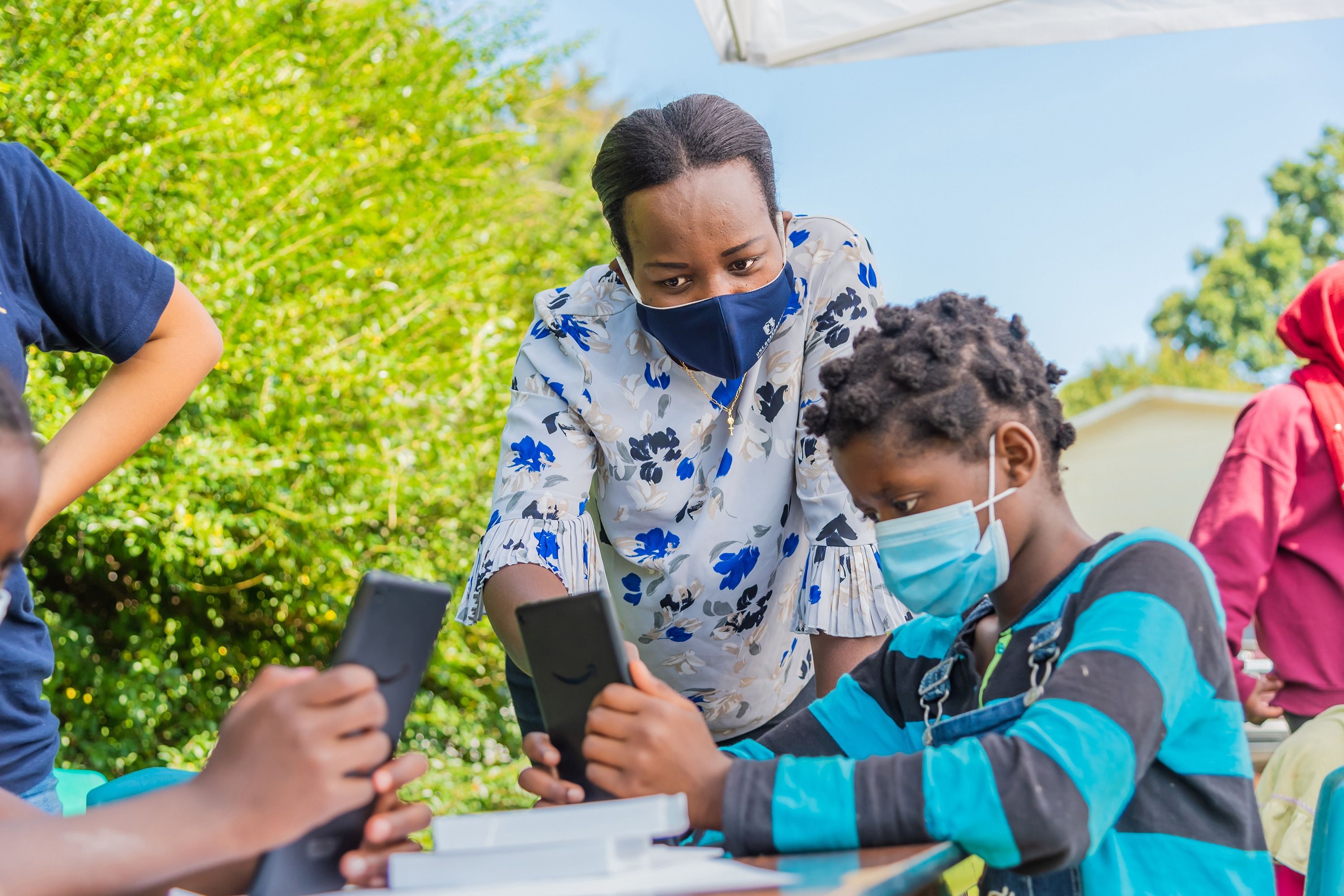
The CNNC distributes tablets – donated by UNCG’s Lloyd International Honors College – to kids at Glen Haven Community Center, to support distance learning during the pandemic. Photos were taken in October 2020. See more at UNCG Flickr.
The pandemic has been particularly devastating for residents at risk for eviction. In response, the Greensboro Housing Coalition has established a rental assistance program and Eviction Resolution Project. The CHCS and Legal Aid of NC are collaborators on the project, which received $900,000 in funding from the City of Greensboro and the Guilford County Homeless Continuum of Care.
In August, Sills says, courts were backlogged in North Carolina, with over 10,000 eviction cases. He expects even more massive numbers in January as the CDC moratoriums on evictions expire.
To try to get ahead of this pending crisis, the CHCS is also developing an additional eviction mediation program pairing tenants facing eviction with volunteer mediators, such as Elon law school students and UNCG students from the Department of Peace and Conflict Studies.
“They will attempt to negotiate between the tenant and the landlord, creating a payback plan but keeping people in place, so that they’re not displaced during these times,” Sills explains.
Meanwhile, Abdo and her staff, many from refugee and immigrant communities themselves, continue efforts to meet basic needs.
“I think this is a test to our responsiveness,” she says. “This kind of direct service is hard. But to stretch and do that, despite the challenges, shows we have a great infrastructure for supporting refugees and immigrants in this city.”
Public health graduate student Tiarra Brown works as an afterschool program coordinator at the CHCS Cottage Gardens Resource Center, located in an apartment complex in east Greensboro.
While the in-person program is on hold, Brown is doing food drop-offs and has organized virtual tutoring, in addition to coordinating the provision of educational supplies, food gift cards, and rental assistance checks provided by grants.
“It’s frustrating not being able to do in-person programming,” she says, “but I am incredibly proud to be a part of CHCS and the Greensboro community right now. We noticed a need, especially during the pandemic, and came up with ways to address it in a very a short amount of time.”
In August, Sills says, courts were backlogged in North Carolina, with over 10,000 eviction cases. He expects even more massive numbers in January as the CDC moratoriums on evictions expire.
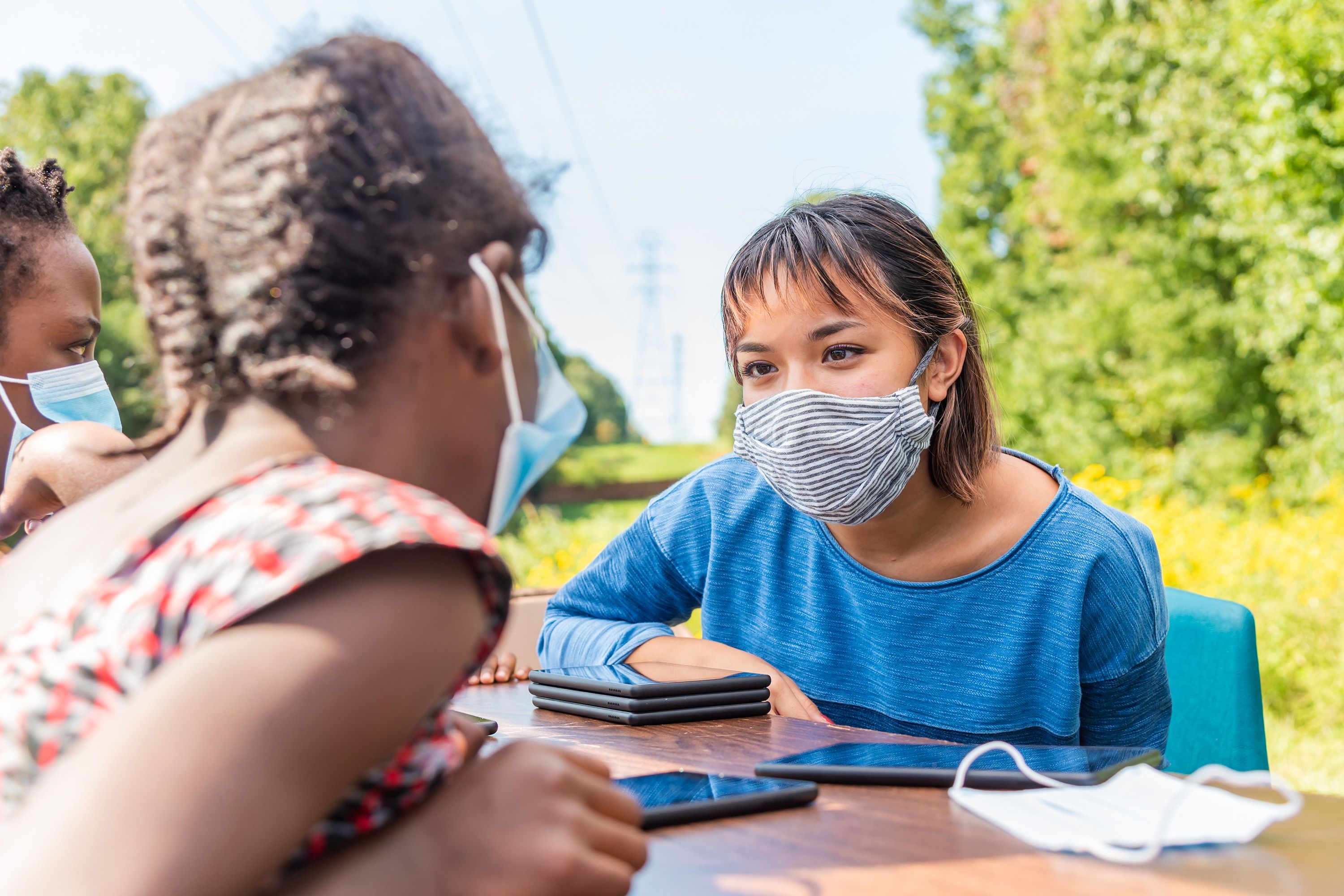
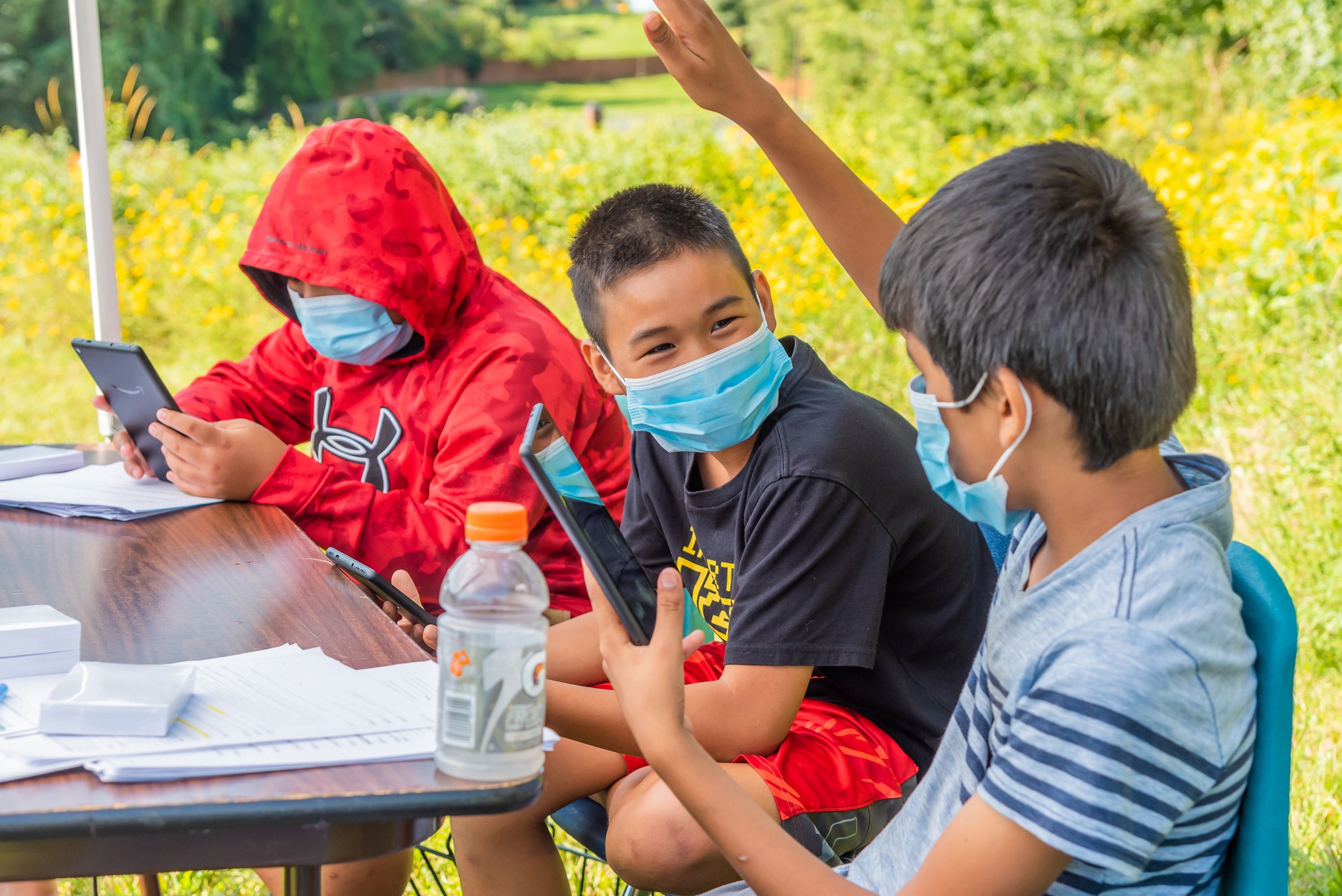
Nutritional status
Assistant professors Seth Armah and Maryanne Perrin are waist-deep in a project examining the interplay of nutrition and COVID-19 in our state. Their funding comes from the North Carolina Policy Collaboratory, as part of the federal Coronavirus Aid, Relief, and Economic Security Act passed in March.
The researchers are looking at how micronutrient status affects the severity of COVID-19 symptoms, with a focus on zinc and selenium. Their inspiration came from a study from China, which found that regions with selenium deficiencies had higher COVID-19 mortality rates than other areas.
“That set our research on selenium,” says Dr. Perrin. “Nobody was really looking at diet quality or nutritional status as a factor in symptom severity, and North Carolina is another region where the soil has lower selenium.”
Studies have shown that selenium supplementation, in combination with other treatments, improves antibody levels and promotes faster clearing of different viruses from our bodies, Armah says. Zinc also plays important roles in immune system function.
For the study, subjects who have had COVID-19 are interviewed about their symptoms and dietary intake, and have their selenium and zinc levels tested. Instead of doing blood samples, Armah and Perrin are using toenail samples that participants submit by mail. With the interviews performed remotely, they are carrying out their research in a completely contact-free manner.
The study should be complete by the end of the year.
“Currently we have a lot of people who have put their lives on the line, doing what they can to fight this battle,” says Armah. “We are not medical professionals, so we cannot work at the front line. But there is something that we can do, and to be able to help fight this virus is very rewarding for us.”
Perrin and Armah (photo one, l-r) assemble kits that will be mailed to study participants and demonstrate how nail samples are processed. Photos taken in September 2020. See more at UNCG Flickr.
Selenium is toxic at high doses, the researchers warn, so don’t use supplements without consulting a health care provider.
Nutritional status
Assistant professors Seth Armah and Maryanne Perrin are waist-deep in a project examining the interplay of nutrition and COVID-19 in our state. Their funding comes from the North Carolina Policy Collaboratory, as part of the federal Coronavirus Aid, Relief, and Economic Security Act passed in March.
The researchers are looking at how micronutrient status affects the severity of COVID-19 symptoms, with a focus on zinc and selenium. Their inspiration came from a study from China, which found that regions with selenium deficiencies had higher COVID-19 mortality rates than other areas.
“That set our research on selenium,” says Dr. Perrin. “Nobody was really looking at diet quality or nutritional status as a factor in symptom severity, and North Carolina is another region where the soil has lower selenium.”
Studies have shown that selenium supplementation, in combination with other treatments, improves antibody levels and promotes faster clearing of different viruses from our bodies, Armah says. Zinc also plays important roles in immune system function.
For the study, subjects who have had COVID-19 are interviewed about their symptoms and dietary intake, and have their selenium and zinc levels tested. Instead of doing blood samples, Armah and Perrin are using toenail samples that participants submit by mail. With the interviews performed remotely, they are carrying out their research in a completely contact-free manner.
The study should be complete by the end of the year.
“Currently we have a lot of people who have put their lives on the line, doing what they can to fight this battle,” says Armah. “We are not medical professionals, so we cannot work at the front line. But there is something that we can do, and to be able to help fight this virus is very rewarding for us.”
Perrin and Armah (photo one, l-r) assemble kits that will be mailed to study participants and demonstrate how nail samples are processed. Photos taken in September 2020. See more at UNCG Flickr.
Selenium is toxic at high doses, the researchers warn, so don’t use supplements without consulting a health care provider.
UNCG biochemistry professor Ethan W. Taylor is part of the team of researchers that identified a significant association between COVID-19 prognosis and regional selenium status in China. The essential dietary trace element has been found to be a factor in the incidence, severity, or mortality of various viral diseases. Dr. Taylor is currently studying the mechanisms behind these findings.
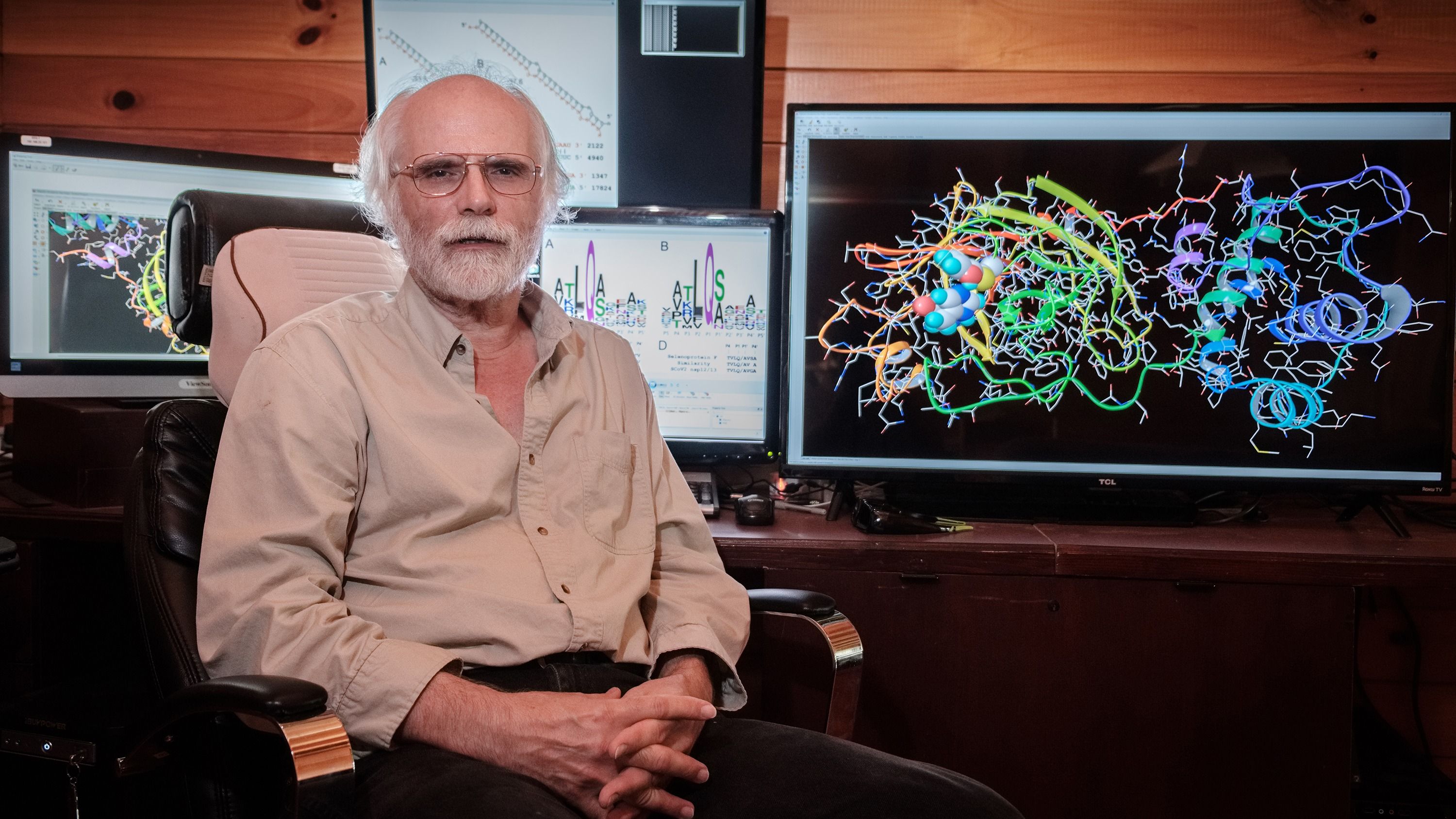
Early detection
With community spread of the novel coronavirus occurring in nearly every country, presymptomatic transmission is perhaps the most intense challenge in public health worldwide.
A recent study in Nature Medicine posited that presymptomatic disease stages accounted for 44% of secondary case infections. There’s a critical need for simple and reliable methods to detect the virus early during the incubation period and in asymptomatic patients.
Sensing the virus at such a stage – when viral particles are at very low concentrations – is a challenging task.
Current methods require nucleic acid amplification, explains UNCG assistant professor Tetyana Ignatova in the Joint School of Nanoscience and Nanoengineering. They’re expensive, time consuming, require advanced expertise, and can’t be made widely available at points of care – where patients are tested.
But what if we could do it in a different way: quickly, cheaply, and with high accuracy?
Dr. Ignatova is trying just that, through a new NSF-funded collaboration with Penn State University and the National Institute of Standards and Technology.
The team – comprised of nanoscientists, engineers, and virologists – is working on a device that uses magnetic nanoparticles to bind live virus molecules.
“A magnetic field will be used to concentrate the nanoparticles that have bound the virus,” Ignatova explains. “And they’ll be designed to fluoresce,” or glow. Those steps, which she and doctoral student Kirby Schmidt are developing, will allow detection of the virus at very low concentrations.
“If we can manage this,” says Ignatova, “we can make the detection process much, much more efficient.” Because the test only senses live molecules, it could also reduce false positives from patients tested after the disease has run its course.
“The nanoparticles can attach to any type of coronavirus, not only the novel SARS-Cov-2,” Schmidt adds. “And it may be possible to detect other viruses this way. I am hopeful that this research will drive future detection methods.”
There’s a critical need for simple and reliable methods to detect the virus early during the incubation period and in asymptomatic patients.
iGrow, an ambitious NIH-funded UNCG study, aims to track 300 pregnant mothers from their third trimester until their children are two, to identify prenatal and early life predictors of childhood obesity. When all in-person research came to a halt in March, the team had to pause data collection from 175 existing subjects as well as new participant recruitment.
This summer, they converted information-collecting to online formats and developed stringent new procedures for COVID-safe in-person data collection, modeling their operations after those being used by pediatric offices. After assessment by a review committee that included pediatricians, project operations resumed in mid-July.
“Our researchers are wearing masks, shields, and ICU gowns and gloves, and screening our participants in the parking lot,” says Dr. Esther Leerkes, one of the project’s lead researchers. “With our families coming to campus, we’ve heard pretty consistently that they felt really safe because of all the precautions we’ve been taking.”
Photos taken July 2020.
Avatar Activated
Kinesiology professor Jennifer Etnier is engaged in a $3.4 million National Institutes of Health clinical trial on physical activity and Alzheimer’s disease – a continuation of a 2013 study that showed exercise correlated with improvements in memory.
Her team is currently looking at the effect of exercise on middle-aged and older adults with a genetic risk of Alzheimer’s disease. “If we could delay Alzheimer’s by one to two years, the impact would be enormous from a public health perspective,” Dr. Etnier says.
The COVID-19 pandemic interrupted two crucial parts of the study: regular, guided exercise for participants and fitness and cognitive testing at regular intervals. To reinstate the first, they converted their exercise program from face-to-face YMCA sessions to a Zoom format, which Etnier says has worked well, especially for new recruits.
Since researchers gained approval to resume working with subjects on campus, fitness tests have been conducted in an environmental chamber, a room that can be completely sealed off and also has enormous ceiling fans turning over all air in the space every 17 minutes.
But perhaps the biggest difference is how the four-hour cognitive test is conducted.
Dr. Shin Park, a postdoc on the study, has an interest in AI technology. After experimenting with Google’s text-to-speech generation technique, he decided to create an avatar who can function as a director for the test, decreasing contact between the researchers and subjects.
The avatar provides all necessary verbal instructions, so the researcher speaks far less, lowering the risk of transmission through expelled droplets.
With the avatar leading, the testing is more standardized and can now be carried out by a student or staff member with less training. It’s an unexpected silver lining. Both Park and Etnier foresee using the avatar in the future, even after the pandemic ends.
But Etnier’s favorite thing about the avatar is his approach.
“Things will get better,” the avatar tells study participants. “So stay strong during this tough time. Although I don’t produce respiratory droplets, I’m going to put on my mask because it’s a rule at UNCG.”
And then, he puts on his mask.
